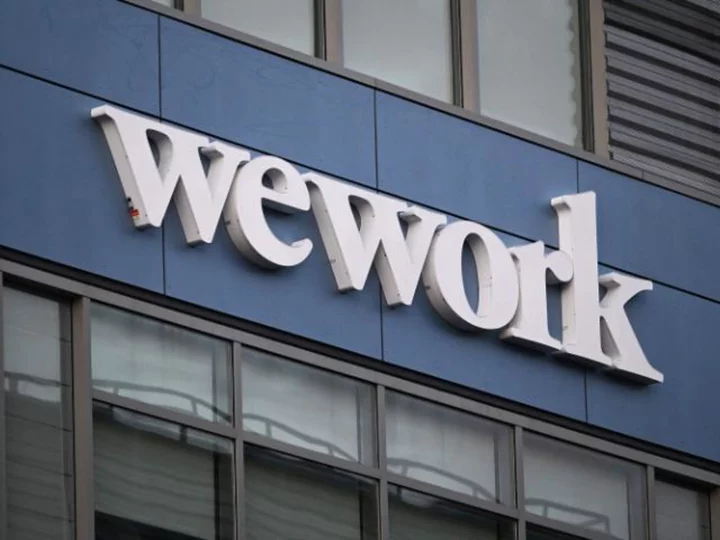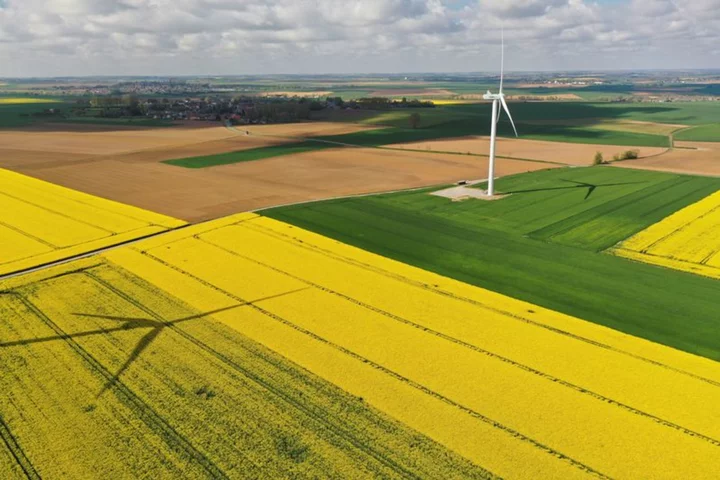NEW YORK (AP) — It's not just you. Sriracha is hard to come by these days — at least for one popular brand.
The shortage of Huy Fong Foods' Sriracha, the beloved red hot sauce packaged in those green-capped bottles, isn't new — with the company pointing to a scarcity of chile pepper supply for several years now. And as frustrated fans continue to face store shelves missing the Huy Fong name, third-party resellers are punching up prices.
Huy Fong Sriracha, which used to go for under $5 or $10 a bottle, is now selling for shocking amounts in some listings posted to sites with vast third-party marketplaces — including Amazon, eBay and Walmart. Many are simply sold out.
For those still in stock, prices range depending where you look. As of Thursday morning, for example, ads for a single 17-ounce bottle on eBay stretched from around $20 to a whopping $150 — contrasting significantly from the price tags of other hot sauce brands, who don't appear to have the same level of supply troubles.
Huy Fong told The Associated Press this week that it continues to be beset by shortages of raw materials, echoing a similar scarcity last year when the company temporarily suspended sales of Sriracha and other popular products like Chili Garlic and Sambal Oelek.
Huy Fong said Wednesday that “limited production" resumed recently, although the California company didn't specify by how much or provide an estimate of when it believes suppliers will be able to deliver an adequate number of peppers.
“Because we do not sell directly to retail/market levels, we cannot determine when the product will hit shelves again and/or who currently has the product in stock,” Huy Fong said in a prepared statement. "We are grateful for your continued patience and understanding during this unprecedented inventory shortage.”
Here's what you need to know.
WHY IS THERE A HUY FONG SRIRACHA SHORTAGE?Experts say that Huy Fong's shortage is partially a consequence of climate change — pointing to weather shifts and extreme drought in Mexico and the U.S. Southwest, where Huy Fong sources all of its chile peppers.
“The main culprit here is a shortage of their primary ingredient, the red jalapeño chile pepper,” said David Ortega, a food economist and associate professor at Michigan State University. “And that’s due to climate change and the mega drought."
These peppers are typically grown under irrigation, with a lot of water drawn from the Colorado River — which has reached unprecedented low levels over recent years, Ortega said. The region has suffered insufficient rainfall and reduced run-off from snow pack.
The impact of climate change on supplies of peppers has become more regular in recent years, however, for Huy Fong and for farmers. When Huy Fong suspended sales last year, it pointed to a 2020 email warning of a chile pepper shortage, noting that a lack of supply had become more severe due to recent weather conditions.
PRICES SKYROCKET FROM RESELLERSThe erosion of available supplies has rocked the prices of Huy Fong Sriracha that is still available. In many places, the bottles are simply sold out — giving leverage to resellers listing the now hard-to-find and highly sought-after product.
Another market force at play is consumer behavior, in this case, hording. The panic around potentially losing access to a desired product leads many people to buy more than they would typically need, — much like what was seen with toilet paper at the beginning of the COVID-19 pandemic.
“People just stock up and that exacerbates the situation,” said Ortega, also an expert in consumer decision-making. “You have an increase in demand for the product, on top of these supply shocks. And prices have really nowhere to go but up.”
WHERE DOES HUY FONG GET ITS CHILE PEPPERS?Huy Fong, which was founded decades ago by David Tran, currently sources its chile peppers from various farms in California, New Mexico and Mexico.
Before sourcing from these farms, California-based Underwood Ranches was Huy Fong's sole supplier for nearly 30 years. The partnership collapsed in 2017 following a financial dispute. Two years later, a jury determined that Huy Fong breached its contract with Underwood Ranches and also committed fraud — awarding Underwood $23.3 million.
Underwood Ranches, which sells its own Sriracha sauce, has not had trouble getting jalapeños from Mexico, owner Craig Underwood told The New York Times this week — while also pointing to “huge demand for our product from Huy Fong's former customers.” The Associated Press reached out to Underwood for further comment on Thursday.
ARE OTHER HOT SAUCES FACING SHORTAGES?There's a myriad of hot sauces, including other of Sriracha-style products, that remain easy to find at reasonable prices. Tabasco, for example, has created a page dedicated to helping customers find nearby stores that sell its brand of Sriracha.
There's a few possible explanations for that, experts say. Some speculate that Huy Fong may issues with its chile suppliers, for example, or that other brands may use different pepper variants and source from farms that haven't been hit as hard. Others might also be in a position to tinker with recipes — but perfecting sauces take a long time, as would finding a new variant, experts say.
"Growing the crop in an area less affected by extreme weather or breeding new variants of the peppers that are more tolerant to heat and require less water, if possible, at all, would take years," Richard Howells, a supply chain expert at SAP, wrote in a blog post earlier this week.
While other hot sauces don't appear to have the same level of supply difficulties, that could change. As the climate crisis deepens, consumers may see consequences more broadly at the dinner table.
"We saw the price of lettuce skyrocket earlier this year, again as a result of these extreme temperatures and related factors like the spread of disease (in plants),” Ortega said. “I would not be surprised to learn about other product shortages that are due to failed crops or just a significant decrease in production because of climate change.”


